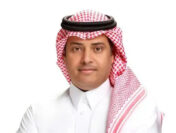 Middle East organizations are adopting the latest Internet of Things (IoT) technology infrastructure to drive the wider region’s USD 8 billion market. According to SAP, as the inter-connected IoT era advances, Middle East organizations are forced to manage a vast network of connected devices, wearables, and physical objects – from cars to oil drills. Using machine-to-machine technology, organizations can provide a secure, usable infrastructure that shares machine and sensor data for actionable information in real-time.
Middle East organizations are adopting the latest Internet of Things (IoT) technology infrastructure to drive the wider region’s USD 8 billion market. According to SAP, as the inter-connected IoT era advances, Middle East organizations are forced to manage a vast network of connected devices, wearables, and physical objects – from cars to oil drills. Using machine-to-machine technology, organizations can provide a secure, usable infrastructure that shares machine and sensor data for actionable information in real-time.
“Every industry vertical in the Middle East is set to be transformed by IoT – from smart utilities predicting service outages, to healthcare providers predicting patient treatments,” said Gergi Abboud, Managing Director for the Gulf, Levant, North Africa, and Pakistan at SAP.
In the Middle East and Africa (MEA) region, IoT spend is set to reach USD 8 billion in 2017, according to a recent report by IDC. In particular, the highest-spending industry verticals include manufacturing and transportation, both at USD 1.3 billion, and utilities at USD 918 million.
“The strength of an Internet of Things use case improves exponentially when you unleash the connectivity between all of the ‘things’ inside and outside of an enterprise across its supply chain. Hence, a secure Internet of Things platform on the cloud becomes vital for supporting next generation applications, which can scale up quickly and easily,” Mr Abboud added.
Showing strong demand, 82 per cent organizations see IoT as ‘strategic’ or ‘transformational’ to their business, according to IDC.
In the Middle East, SAP is seeing strong demand for the SAP Leonardo digital innovation system. The company is working closely with Middle East organizations on IoT co-innovations, such as a remote inspection robot for the Dubai Electricity and Water Authority, and Emirates NBD bank on augmented reality housing loans.




